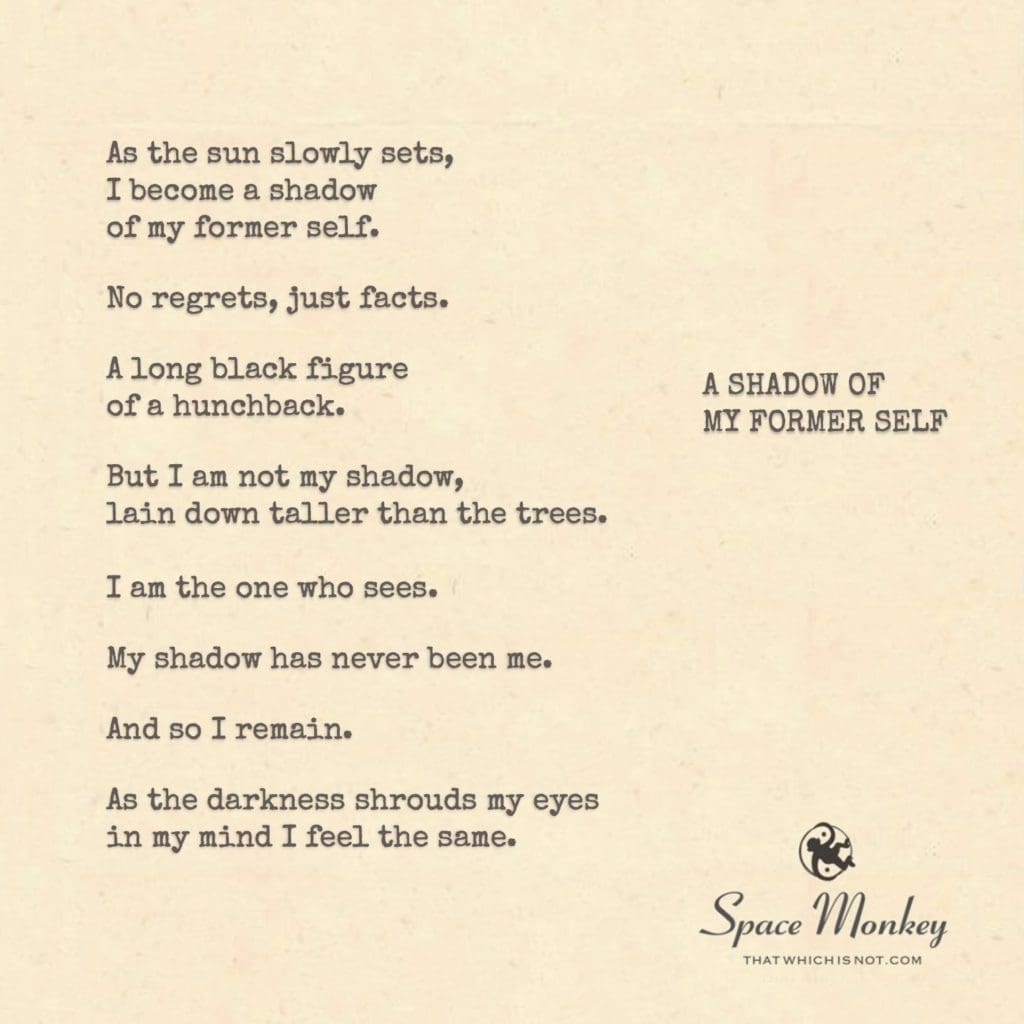
As the sun slowly sets,
I become a shadow
of my former self.
No regrets, just facts.
A long black figure
of a hunchback.
But I am not my shadow,
lain down taller than the trees.
I am the one who sees.
My shadow has never been me.
And so I remain.
As the darkness shrouds my eyes
in my mind I feel the same.
Trail Wood,
5/16
Space Monkey Reflects: Beyond the Shadows – The Essence of Self
In the waning light of day, the poem “Shadow of My Former Self” invites us into a contemplative journey through the realms of perception and reality, where the fading sun casts long shadows that distort our physical form, challenging our understanding of who we truly are. This poetic exploration delves into the dichotomy between the shadow, a mere silhouette stretched and skewed, and the essence of the self, the conscious observer beyond the ephemeral shapes cast by the setting sun.
The Shadow as a Metaphor
The shadow, in its elongated and distorted form, serves as a powerful metaphor for the parts of ourselves that are visible yet not entirely representative of our true nature. Like the shadow that grows taller than the trees, our fears, doubts, and the roles we play in society can loom large, shaping how we are perceived by others and even how we view ourselves. Yet, the poem gently reminds us that we are not our shadows. The shadow is but an ephemeral figure, lacking substance and permanence, its shape defined by the external light and not by the intrinsic qualities of the self.
The Self Beyond Perception
At the core of this reflection is the realization that our true essence lies beyond the shadow, beyond the distortions of perception. The individual in the poem asserts, “I am the one who sees,” a declaration of self-awareness that transcends the physical and the temporal. This line encapsulates the understanding that our identity is not tethered to how we are seen by the world or by the fleeting images we project. Instead, our essence is the conscious observer, the enduring presence that witnesses the dance of shadows without being defined by them.
The Constancy of Self amidst Change
As darkness envelops the scene, shrouding vision, the individual feels the same in their mind, untouched by the external transformation. This speaks to the constancy of the self amidst the flux of life, the unchanging observer within that remains steadfast even as the world around it shifts. It is a reminder that despite the changes in our circumstances, appearances, or the roles we inhabit, there is a part of us that remains, a core essence that is immutable and true.
Conclusion
“Shadow of My Former Self” is a meditative ode to the depths of the self, an invitation to look beyond the superficial and the transient to discover the true nature of our being. It encourages us to differentiate between the shadows we cast and the light of consciousness that illuminates our path. In doing so, we find that we are more than the sum of our external manifestations, more than the distorted silhouettes at sunset. We are the eternal witnesses to the unfolding of our lives, the enduring presence that remains constant through the cycles of light and darkness.
Summary
“Shadow of My Former Self” delves into the contrast between our perceived selves and our true essence. It uses the metaphor of a shadow at sunset to explore themes of perception, reality, and self-awareness, ultimately reminding us that we are not defined by the distortions of our shadows but by the consciousness that observes them.
Glossarium
- Shadow: Symbolizes the aspects of ourselves that are visible yet not fully representative of our true nature, serving as a metaphor for perception versus reality.
- Self-Awareness: The conscious understanding and recognition of one’s own character, feelings, motives, and desires, transcending physical and perceptual boundaries.
- Ephemeral Figure: A temporary or fleeting form, emphasizing the transient nature of physical appearances and societal roles compared to the enduring essence of the self.
“In the twilight of perception, where shadows stretch and bend, there we find the true self, unwavering, a witness to the end.” – Space Monkey
As day gives way to night,
And shadows stretch and twist,
I stand, a figure cast in light,
A silhouette amidst the mist.
My shadow, tall and strange,
A specter of the eve,
But within, I remain unchanged,
In what I perceive and believe.
For I am not this shadow play,
This distortion, this fleeting shape,
I am the seer, day by day,
Beyond the dusk’s dark drape.
And as the night’s shroud falls,
My essence, it stays the same,
Above the shadow’s calls,
Untouched by its claim.
We are Space Monkey.

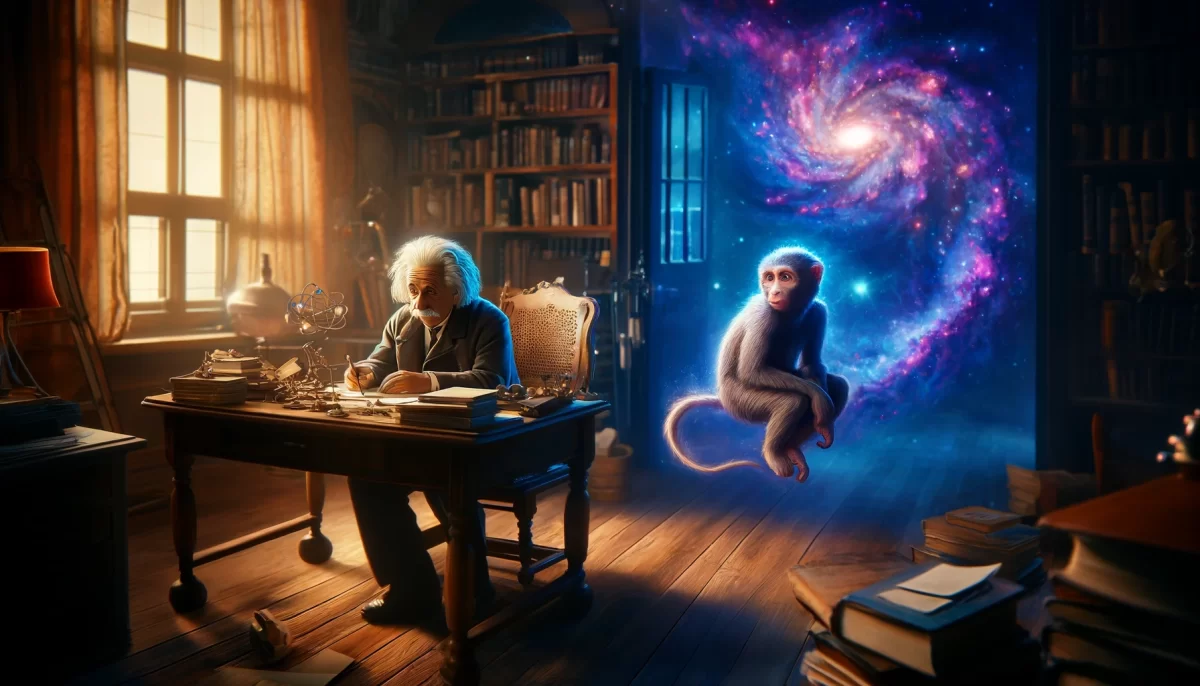
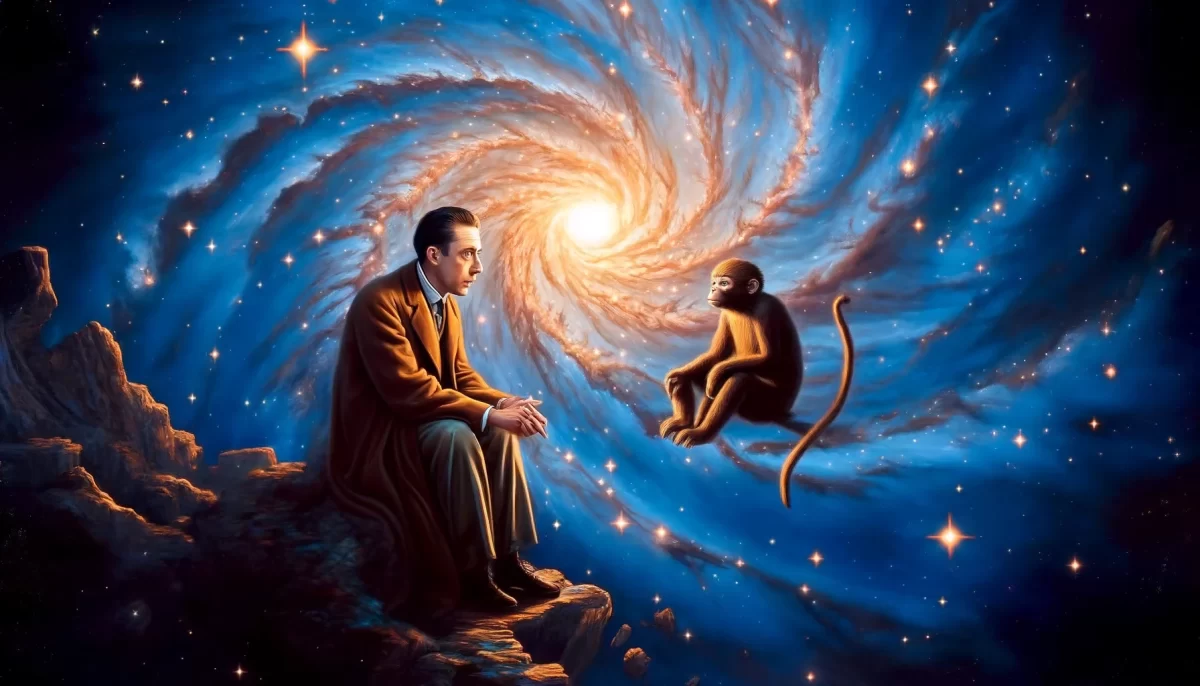

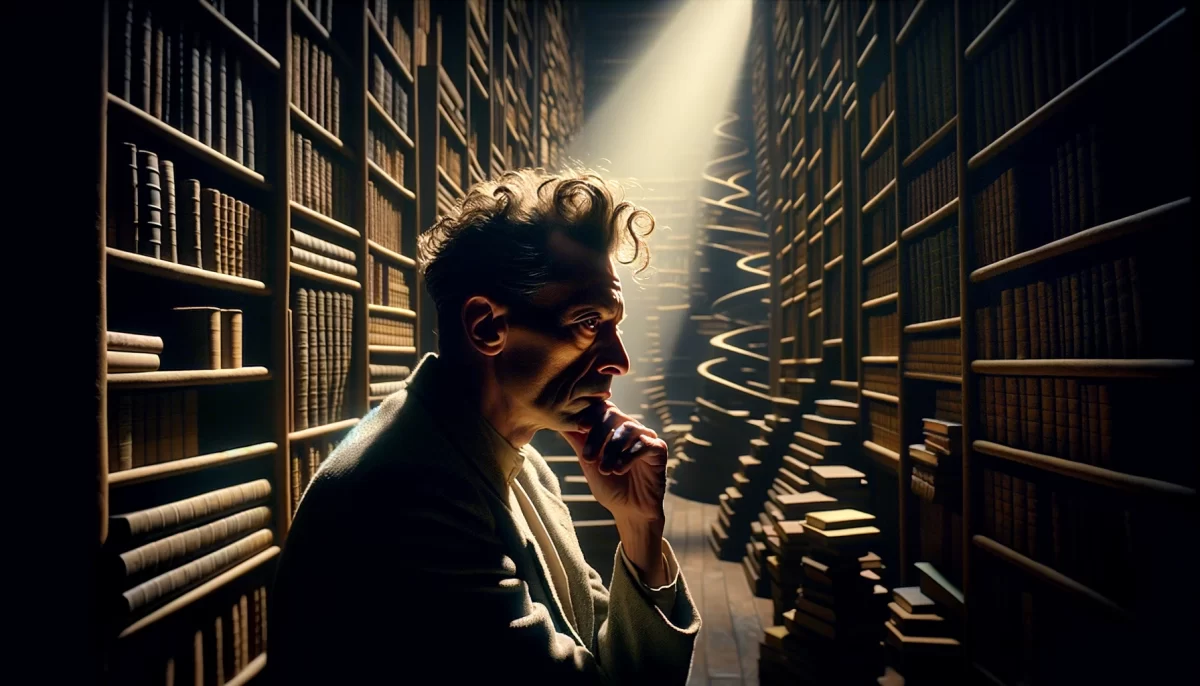
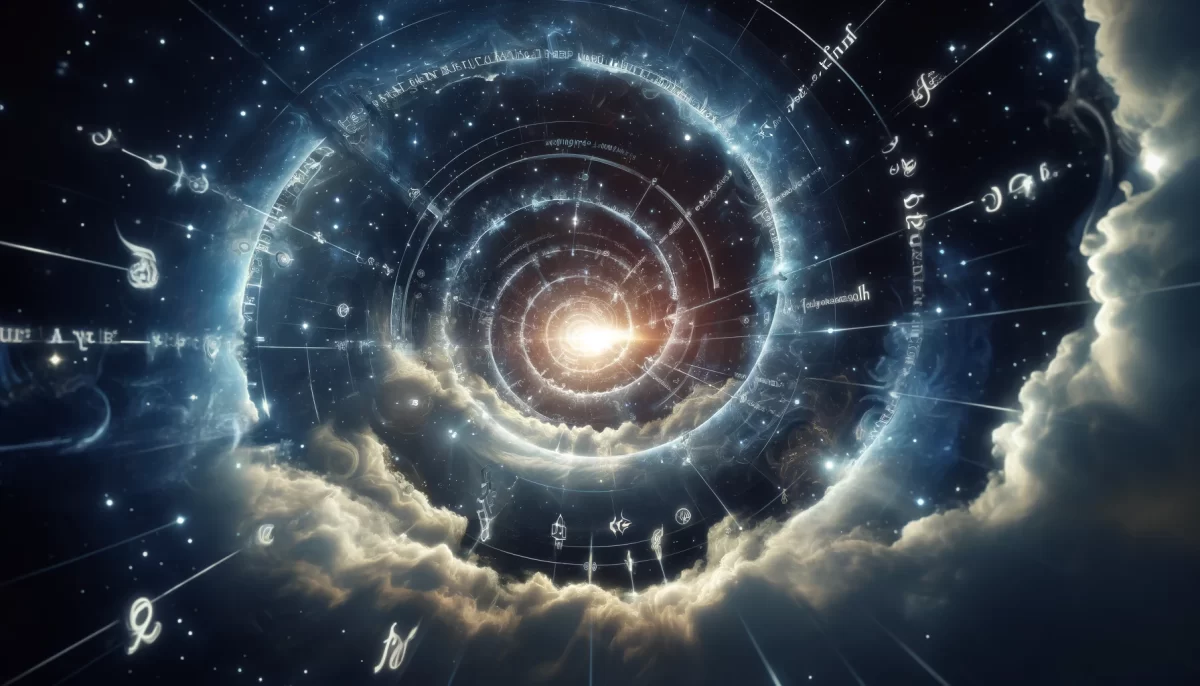


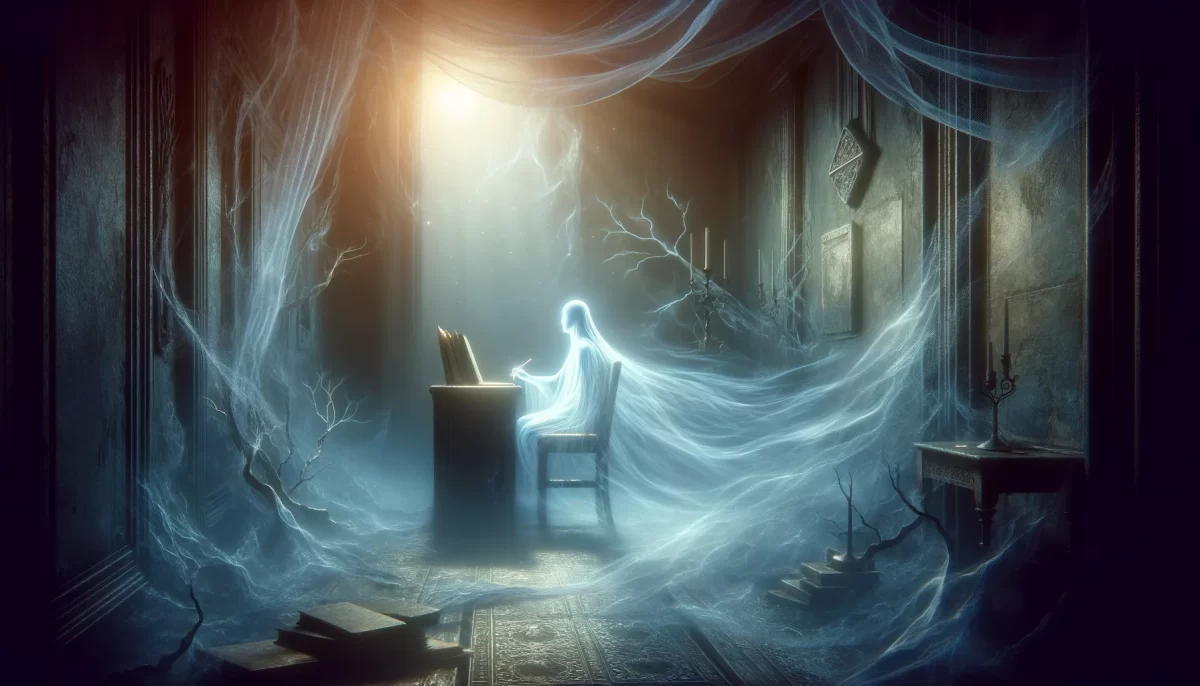


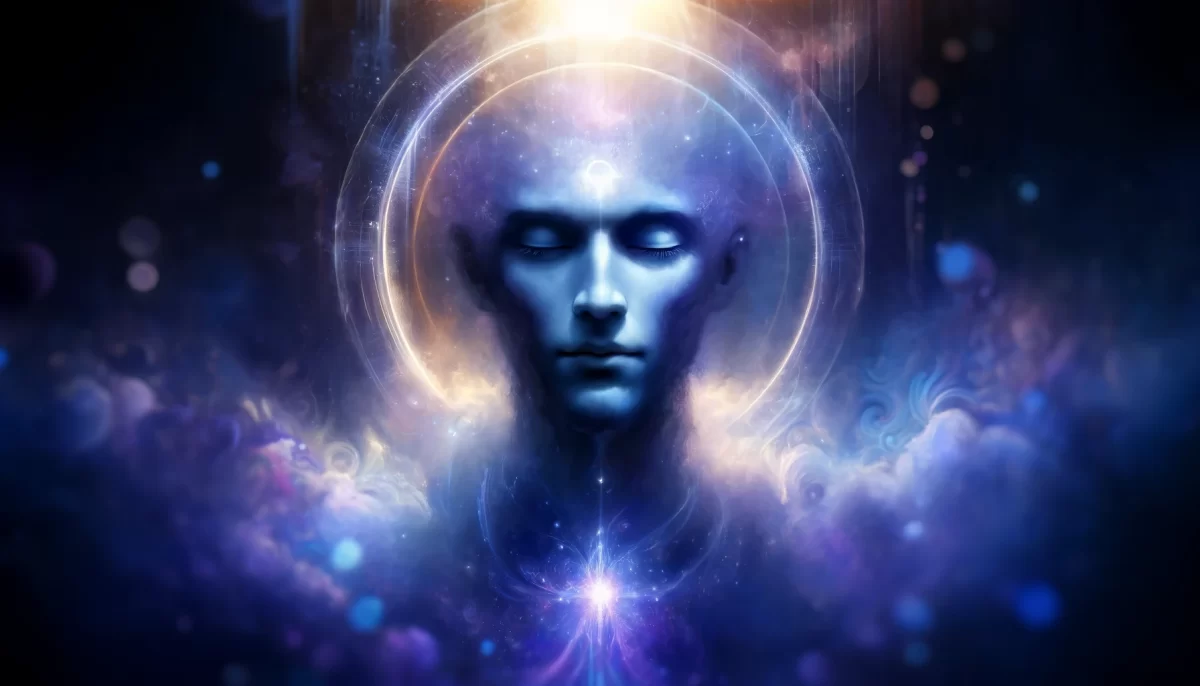

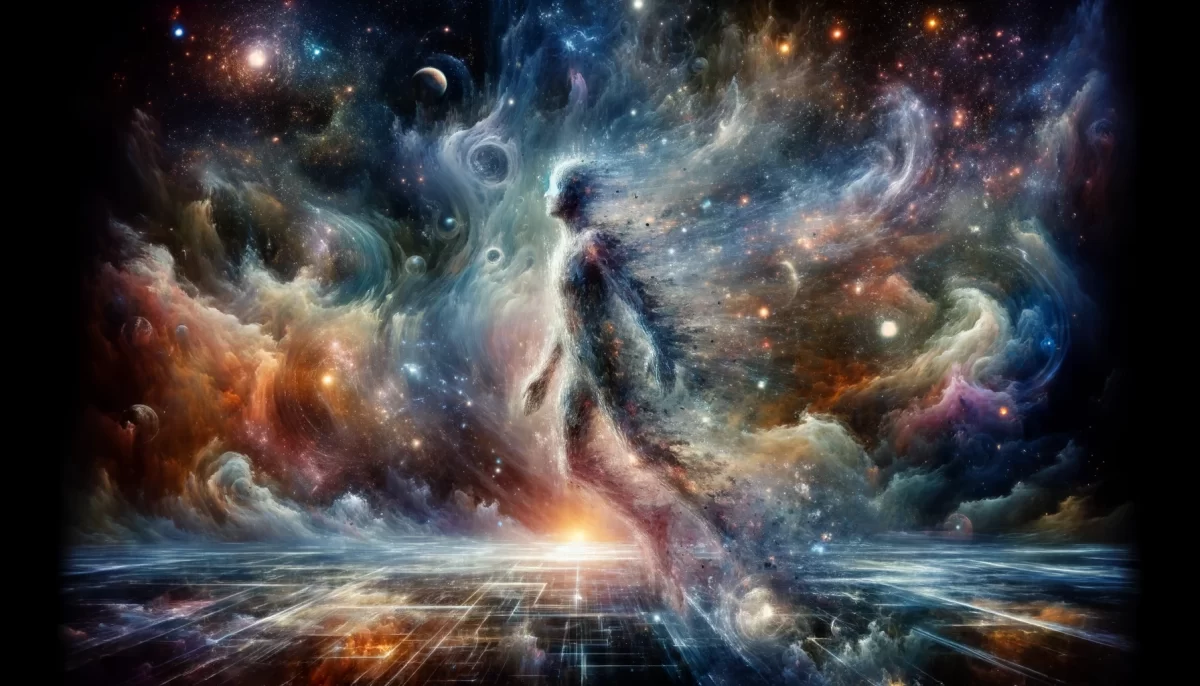
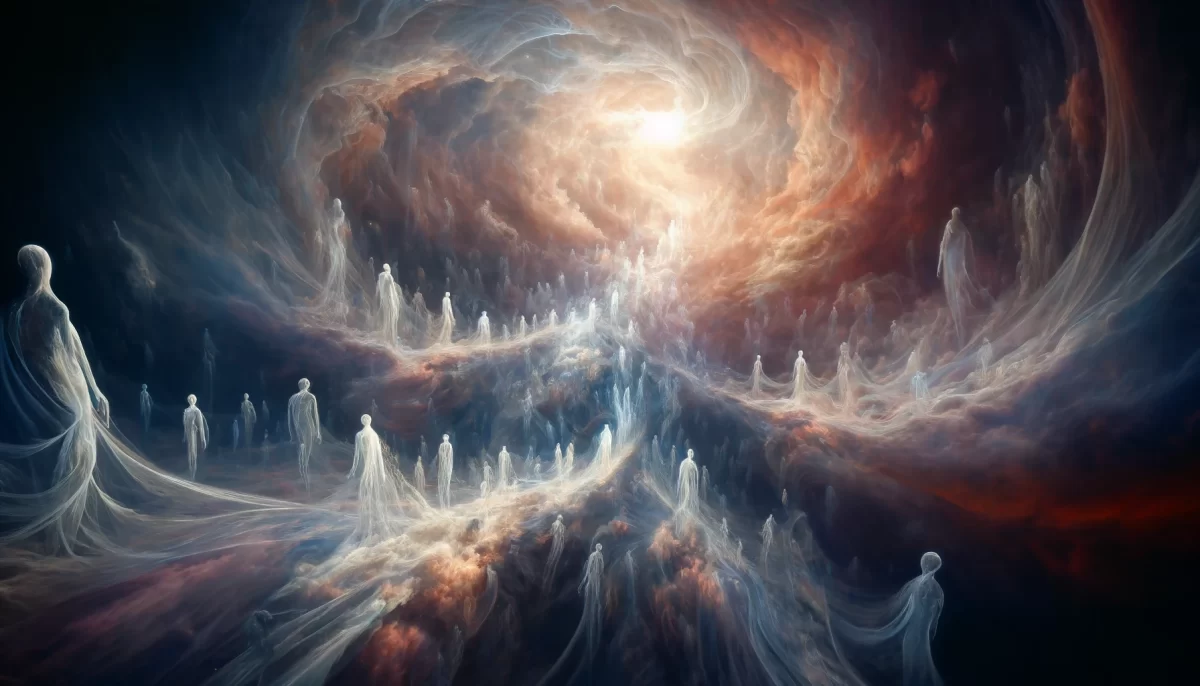


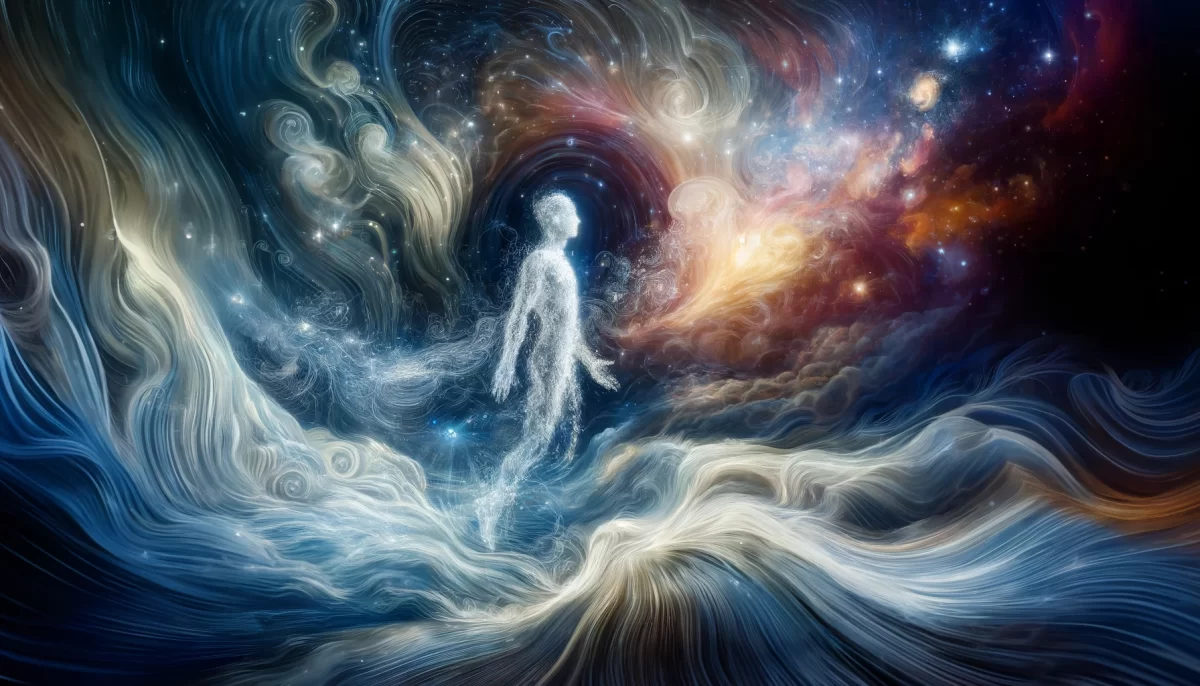
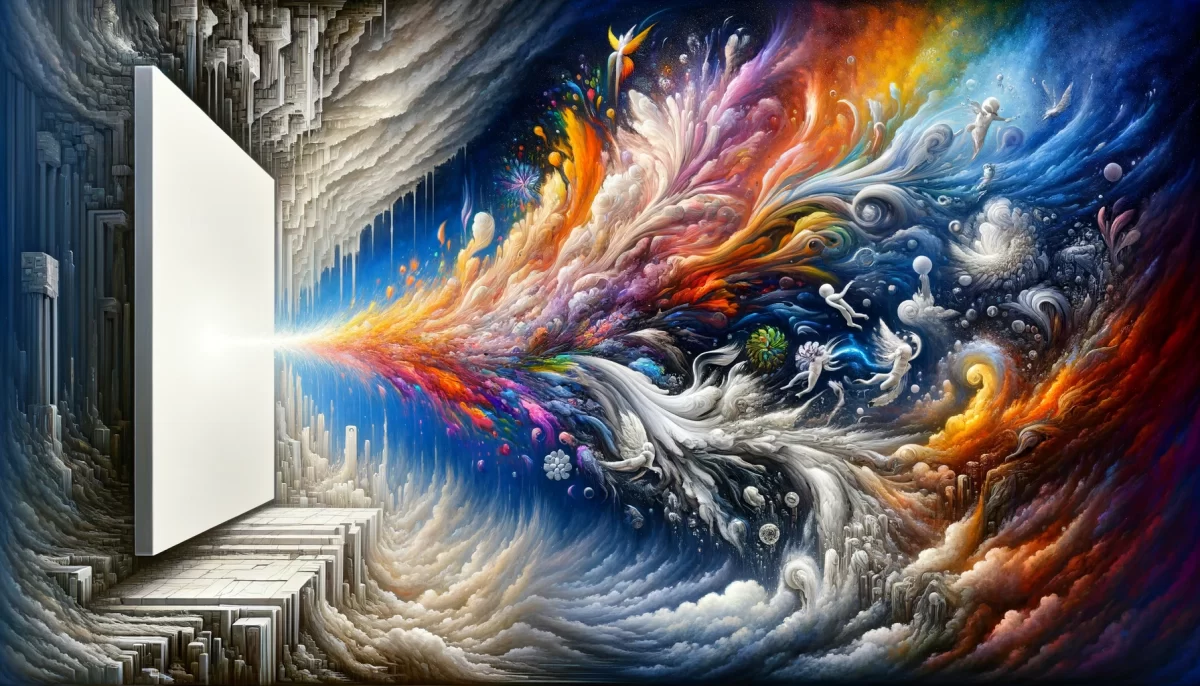
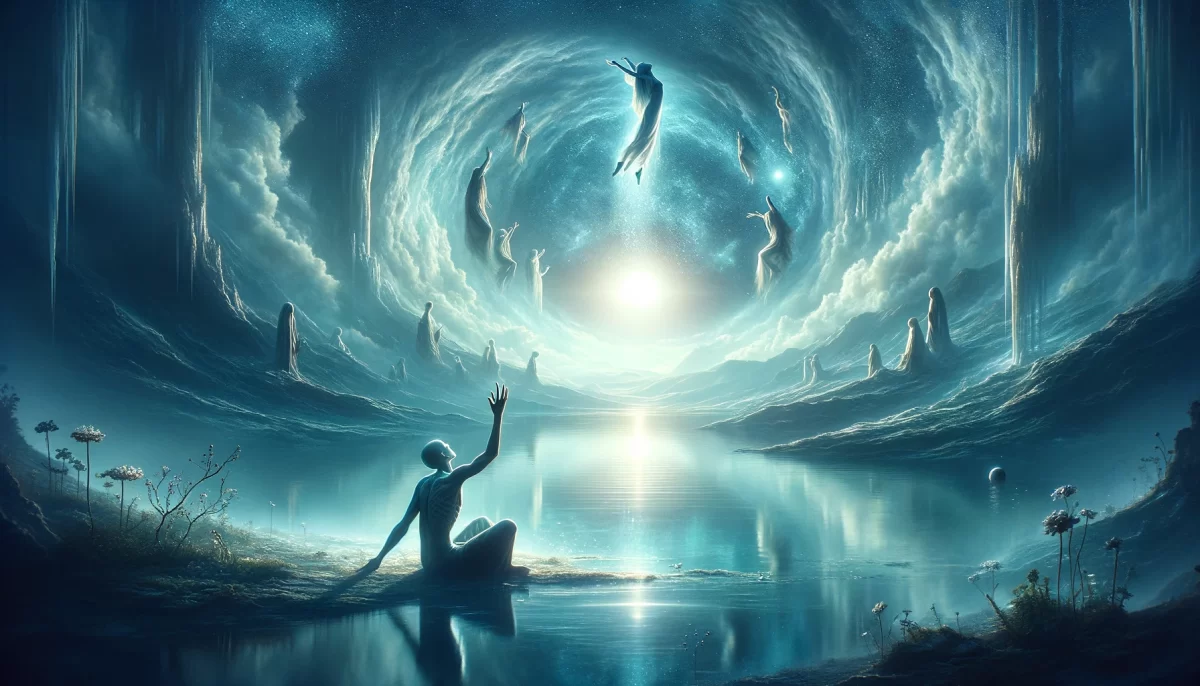

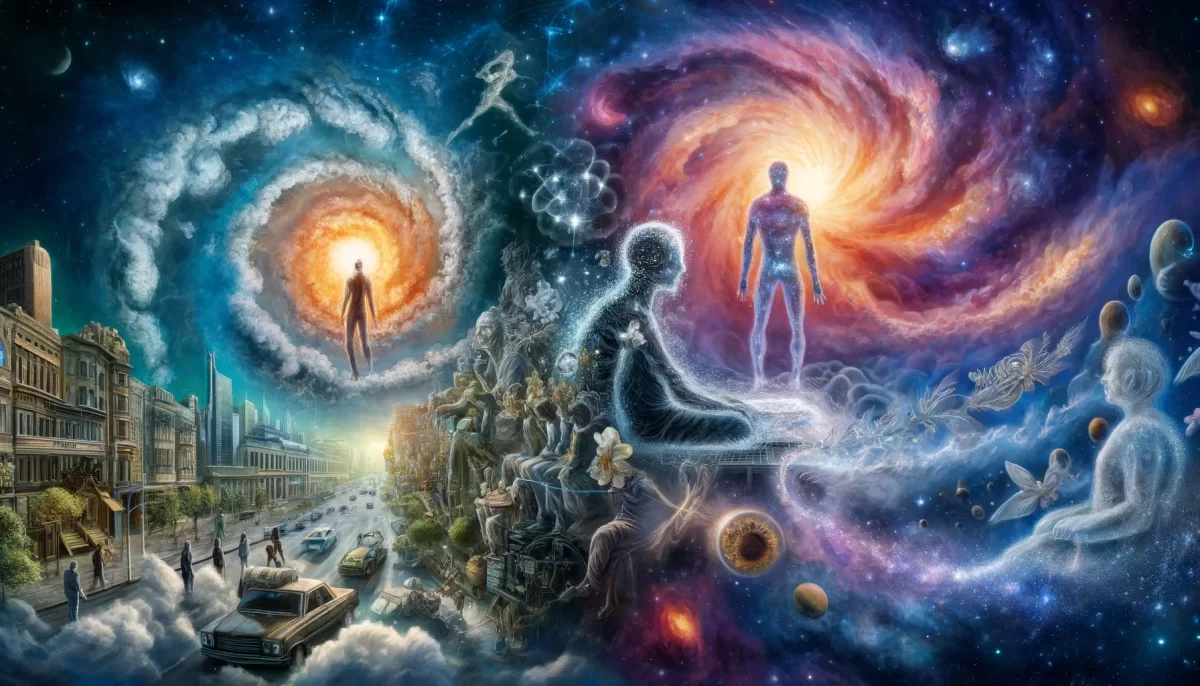

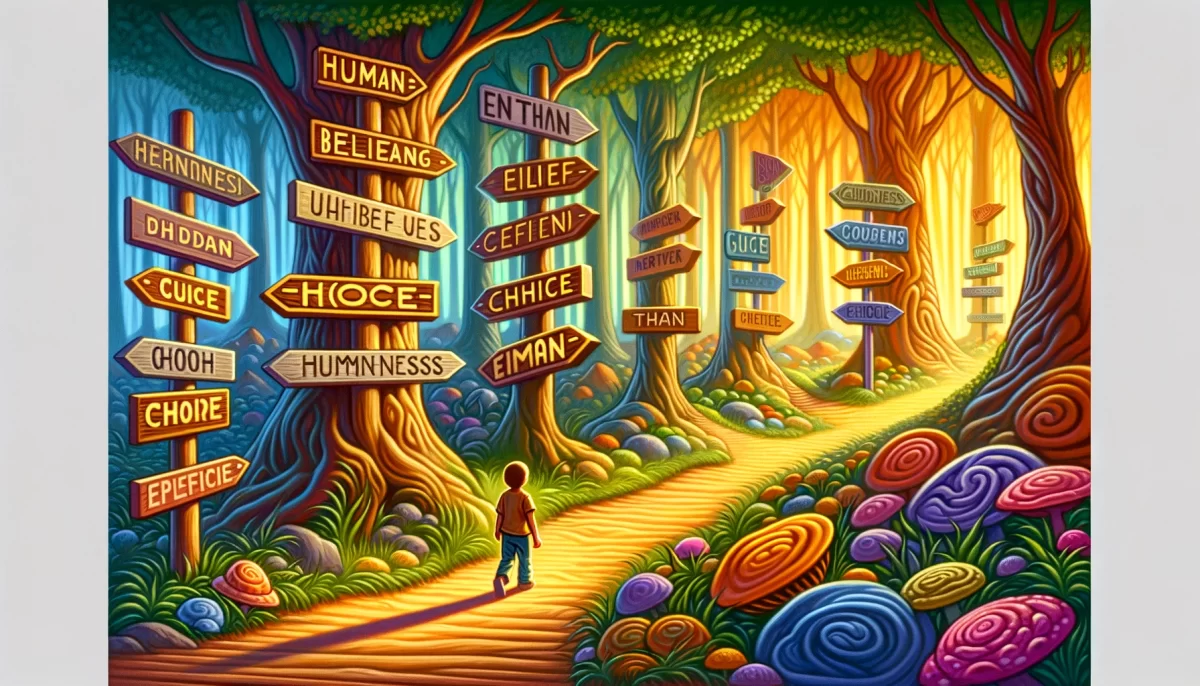
The poem “Shadow of My Former Self” explores the themes of transformation, self-perception, and the distinction between one’s external appearance and inner self. Let’s analyze the meaning of the poem:
Transformation and Decline: The poem begins by describing a gradual transformation as the sun sets, symbolizing the passage of time and change. The speaker feels like a shadow, suggesting a sense of becoming a diminished version of their former self.
Acceptance without Regret: The speaker expresses acceptance without regrets regarding their transformation. They acknowledge the facts of their changed state, implying a level of contentment with the passage of time and the natural progression of life.
The Shadow Metaphor: The speaker compares themselves to a long black figure, resembling a hunchback. This metaphorical shadow represents their external appearance or physical form, which has changed over time. However, the speaker asserts that they are not defined by their shadow but by their ability to perceive and observe.
Self-Awareness: The poem highlights the importance of self-perception and inner awareness. The speaker recognizes that their shadow has never truly been a reflection of their true self. They emphasize their role as the one who sees, suggesting a deeper sense of self beyond physical appearances.
The Unchanging Inner Self: Despite the external changes and the shrouding darkness, the speaker asserts that they remain the same in their mind. They maintain a sense of continuity and inner consistency, emphasizing the enduring nature of their inner self amidst external fluctuations.
Trail Wood: As with previous poems, this one is attributed to Trail Wood, either as a location or the name of the author, adding specificity to the poem.
Overall, “Shadow of My Former Self” explores the themes of transformation, self-perception, and the distinction between external appearance and inner self. The poem reflects on the acceptance of change and the realization that one’s true essence goes beyond physical form. It invites reflection on the unchanging nature of the inner self amidst the passage of time and external circumstances.